For centuries in the western world, the study of science has been dominated by a specific demographic – those with economic and cultural advantages necessary to advance in academics and research careers. Likely white, likely male.
In 2018, a National Institutes of Health study found that, over the previous seven years, only 1% of NIH grants for experienced investigators went to underrepresented minorities. The percentages for early stage and new investigator funding were only slightly higher.
Diversifying research is crucial, not only for the benefit of the young scholars entering various fields, but for the disciplines themselves, says Dr. Lee Phillips, director of UNC Greensboro’s Undergraduate Research, Scholarship, and Creativity Office.
“A diverse set of researchers can more effectively identify and address problems, particularly in a country like America where our professional workforce doesn’t reflect our diverse demographics.”
But to shake up the scientific workforce, Phillips and his colleagues say, you have to start at the beginning.
Most students enter college unprepared for research careers. They don’t know how to ask questions, conduct projects, or present their results.
What takes undergraduates to the next level? What gets them to the point where they may consider graduate school and a scientific career?
Phillips says mentorship from a faculty member is proven to help students succeed in college and then advance to graduate school. Students also thrive with exposure to the professional research world.
But a student needs economic freedom to spend time doing that. They need peers, mentors, or educational experiences to introduce the idea of conducting research – both the reasons and the processes. Much of this depends on socioeconomic circumstances. And that undeniably keeps students and universities, as well as fields of study and industry, locked within systematic racism.
Two years ago, nanoscience professor Dan Herr, Phillips, and their colleagues won NIH funding to launch a MARC U-STAR program. Through the two-year program, promising underrepresented students receive financial support, targeted mentoring, hands-on experience, and exposure to the professional world of research.
The program has opened up new possibilities for the recruitment of students of color and women, giving new structure to the pipeline.
M aximizing
A ccess to
R esearch
C areers
U ndergraduate
S tudent
T raining in
A cademic
R esearch
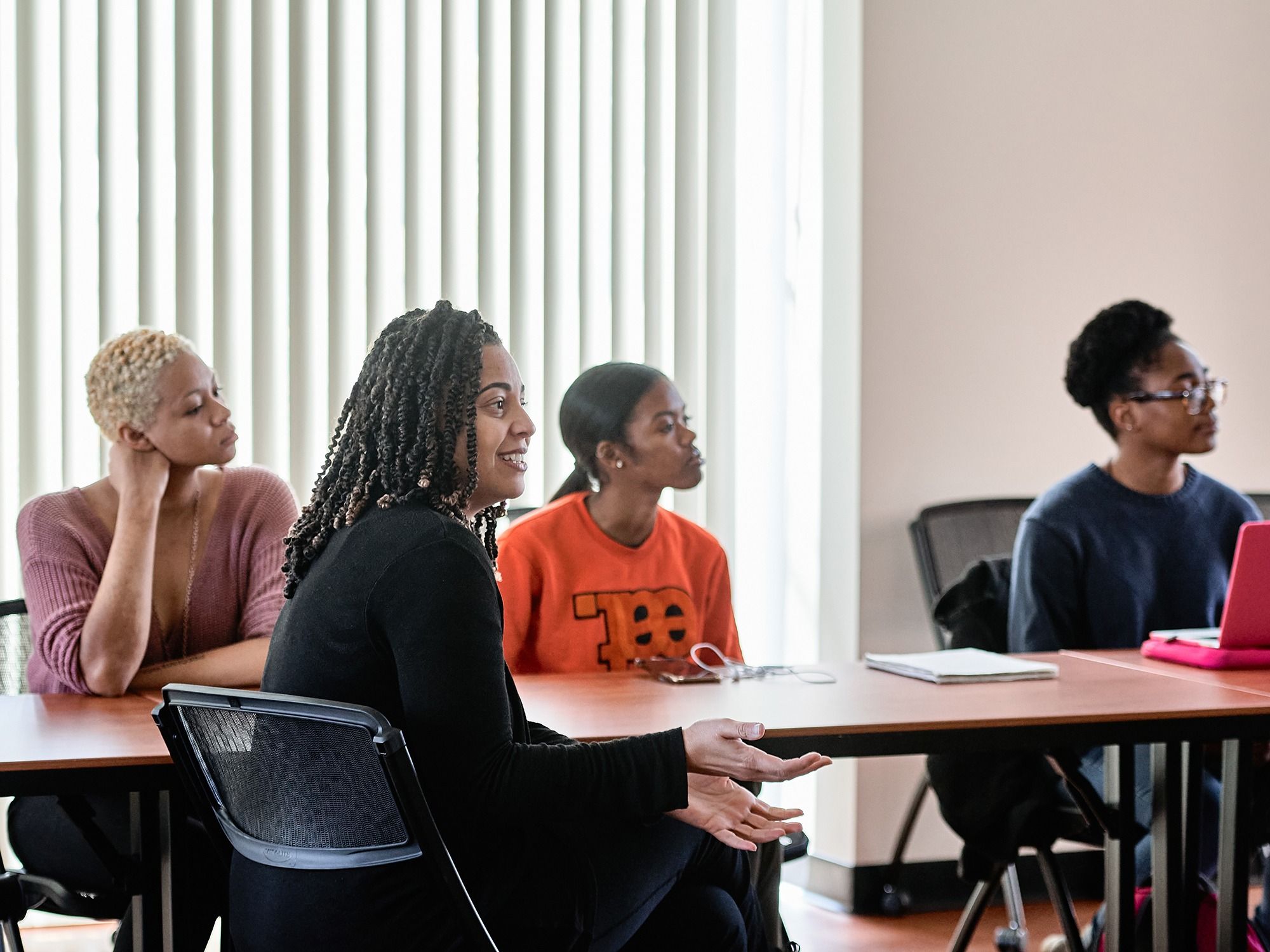
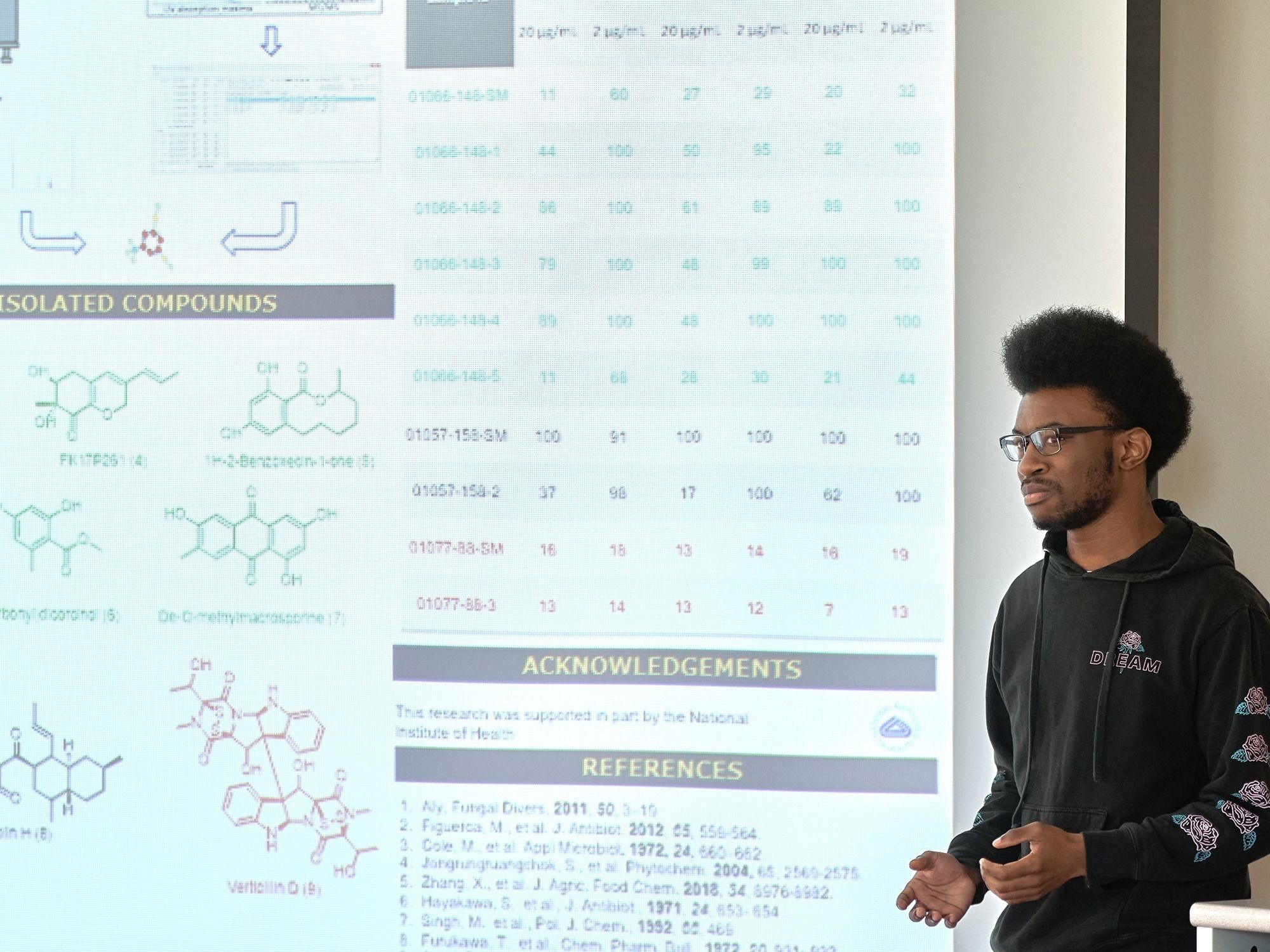
A COMMITMENT TO CHANGE
Dr. Joseph Graves, an NC A&T State University professor at the UNCG-NC A&T Joint School of Nanoscience and Nanoengineering, is another principal investigator, or PI, on the project. He also teaches courses, such as “Genes, Race, and Society,” at UNCG.
Graves has worked with MARC U-STAR programs and similar initiatives since 1985. As the first African American to have earned a Ph.D. in evolutionary biology, he believes the most effective mentorship for minority students comes from minority scientists. Throughout his career he has made a point of seeking out these students to mentor them. Graduate and postdoctoral researchers in his lab are encouraged to provide similar mentorship to the next generation of researchers.
“It creates an atmosphere where students feel at home,” he explains. “Universities have traditionally not been accommodating to underrepresented minorities, so within these institutions we create an environment where students feel supported by people who look like them.”
Associate Professor of Chemistry Kim Petersen mentored MARC fellows when the project launched, and recently joined the PI team. Another critical student relationship, she says, is with academic enhancement coordinator Traci Miller, who tracks their progress, advises them, and plans professional development opportunities.
“We’re giving students these big experiences. Then we build in mentoring activities,” says Petersen. “This is taking undergraduate research to the next level, especially with the amazing conferences.”
The team plans to follow the careers of successive cohorts of MARC students for a minimum of 15 years, to study program impacts. Herr says the program is a long-term commitment, not just in terms of charting student progress, but in maintaining a connection and continuing to provide mentorship.
“It feels more like an extended family,” he says. “I tell the MARC students: ‘wherever we are, call me anytime.’”
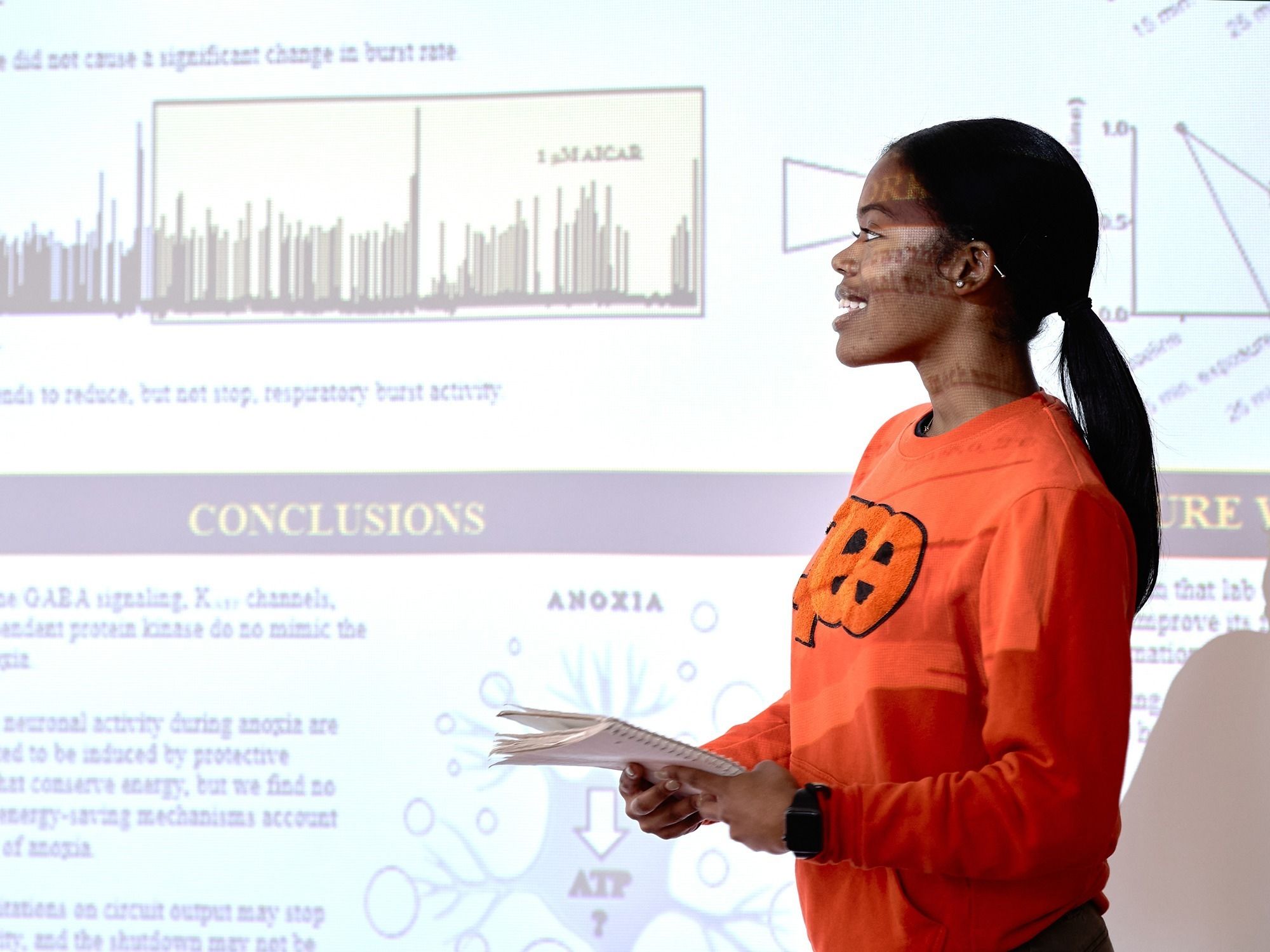
DEVELOPING SCHOLARS One of the biggest conferences the students attend is the Annual Biomedical Research Conference for Minority Students, which Phillips calls “a rock show for biology and chemistry students.” UNCG MARC fellows attend the conference for both years of the program, with an impetus to present research their second year. Above, students practice their 2019 ABRCMS presentations, one week out from their departure to Anaheim, California. See more photos on UNCG Research Flickr
NATURAL STEP
Chris Roberts is a junior at UNCG and a first-year MARC fellow.
He began working in Sullivan Distinguished Professor Nicholas Oberlies’ natural products lab as a sophomore, but his admission to MARC has allowed him to increase his lab time considerably.
During his on-campus research experience this past summer, he learned to work through many different phases of research, with the ultimate goal of identifying anticancer drug leads from different fungi.
He began by mastering the extraction of fungal cultures and quickly advanced to techniques, such as high-performance liquid chromatography, for purifying drug leads. Once compounds are isolated, he analyzes their structures via nuclear magnetic spectroscopy and mass spectrometry, gaining valuable skills on UNCG’s highly precise research instruments.
Roberts knew he could succeed in the classroom, but he says he couldn’t have learned how things work in the lab without hands-on research experience – and his mentor agrees.
“There’s something about chemistry that’s very tactile. You just have to do it,” says Oberlies.
In the natural products chemistry lab, Roberts has also found new motivation.
“What drives me is finding ways to cure different diseases. It interests me how different medicines are produced. There are around 5 million species of fungi and only around 130,000 have been investigated.”
Roberts knows that more than half the drugs that treat cancer are derived from a natural source, and, like everyone in Oberlies’ lab, Roberts is eager to test as many new fungal compounds as possible against human cancers. With funding from the National Cancer Institute, they test up to 500 species a year.
“1,500 people will die from cancer today. Our goal is to find a compound to minimize that number in the future,” says Oberlies. “Could that discovery come from an undergraduate? Absolutely.”
Doctoral student Sonja Knowles has served as another mentor for Roberts. “In the beginning, I would be with Chris through every step, to train him on techniques as well as the rationale behind them,” recalls Knowles. “But he has grown tremendously and now works independently, including troubleshooting when a problem arises.”
Now, Roberts is training other student assistants. “Chris has been an asset to not only me but the whole lab,” says Knowles. “He has become a great example for new students.”
As a MARC scholar, Roberts will next complete a summer experience at an external doctoral institution. While positions in every university lab are highly coveted, Oberlies says Roberts is much more likely to be able to find one as a MARC fellow. As a funded student who already has experience in the lab, he is an asset.
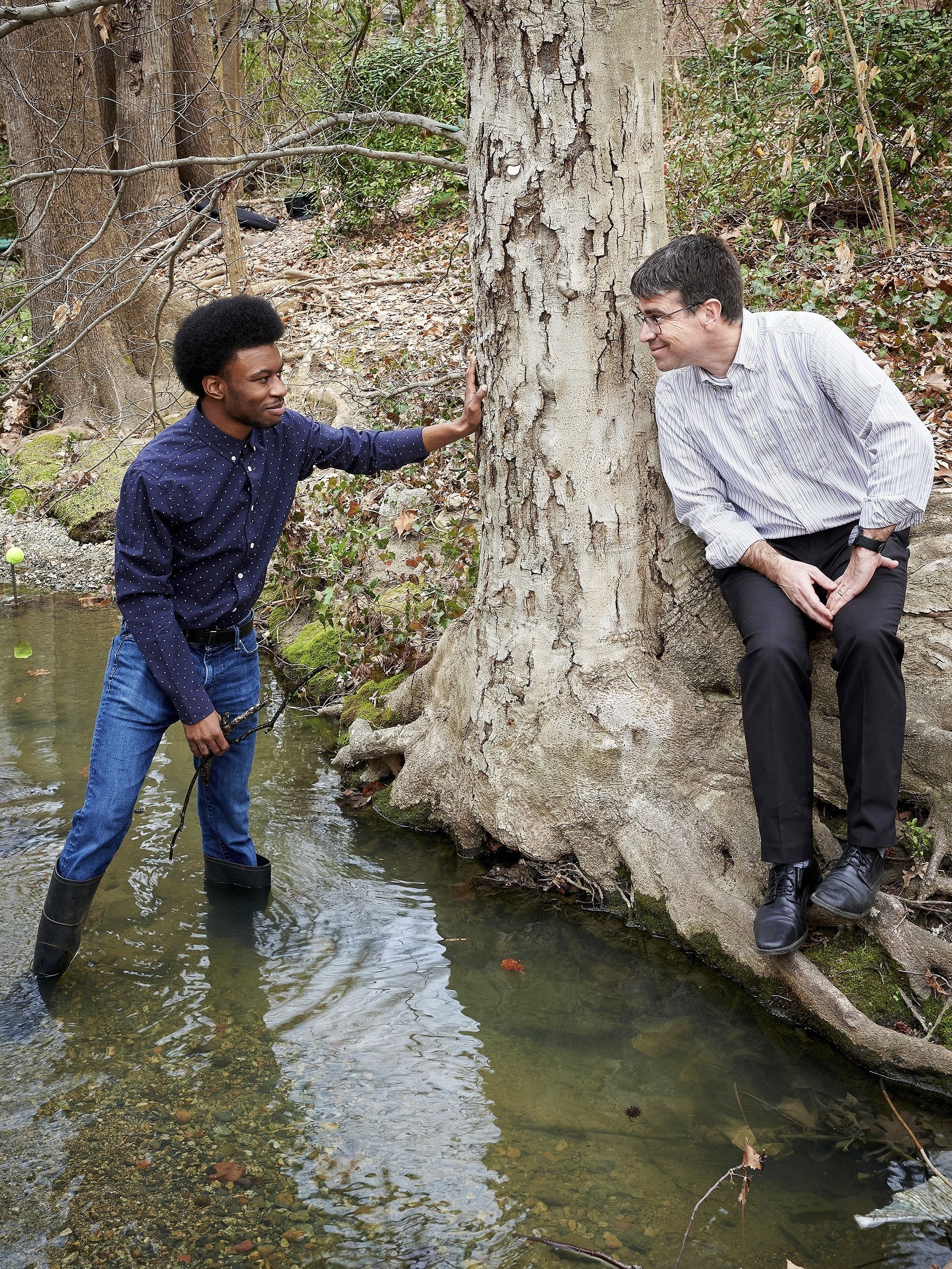
WADING IN Roberts, pictured with Oberlies on right, collects and tests fungal compounds, as part of the lab’s search for new drugs to treat cancer. He is also a recipient of an NSF STAMPS – Science, Technology and Math Preparation – scholarship. The STAMPS program and MARC U-STAR are just two of a host of initiatives at UNCG targeting underrepresented students.
STAND-OUT GROWTH
Senior biology major Mo’nay Rodgers applied to become a MARC fellow in 2018.
In her cell biology course during her junior year, she realized, for the first time, that she had potential to excel as a scholar.
“Cancer cell cycling was interesting to me,” she recalls. “It wasn’t a class where I had to study, but I wanted to.”
She was accepted into MARC, and though she could have graduated in 2019, she decided to stay an extra year to fully make use of the research opportunities and mentorship she would receive.
Now in her second year of the program, she has assisted in Dr. Graves’ genomics laboratory for two different projects and also worked at the Purdue University Center for Cancer Research.
Rodgers is especially pleased about the opportunity to attend and present her work at academic conferences – not only ABRCMS and UNCG’s Thomas Undergraduate Research Expo but also the Biocomputational Evolution in Action Conference, an NSF-funded event in Lansing, Michigan.
At the most recent ABRCMS, Rodgers presented her work on iron magnetite resistance in E. coli, and the resulting genetic adaptations that can produce more dangerous strains of the bacteria.
“The work Mo’nay is participating in helps us better understand how bacteria may evolve resistance to novel nanomaterials,” explains Graves. “We want to slow down the spread of multidrugresistant bacteria.”
SEEING YOURSELF AS A SCIENTIST Rodgers says her most meaningful inspiration comes from peer and mentor networking. “In science, I don’t always get to see people who look like me,” she says. “To be in a room full of people like that is really exciting, and to have them so happily and openly ready to work with me is thrilling.”
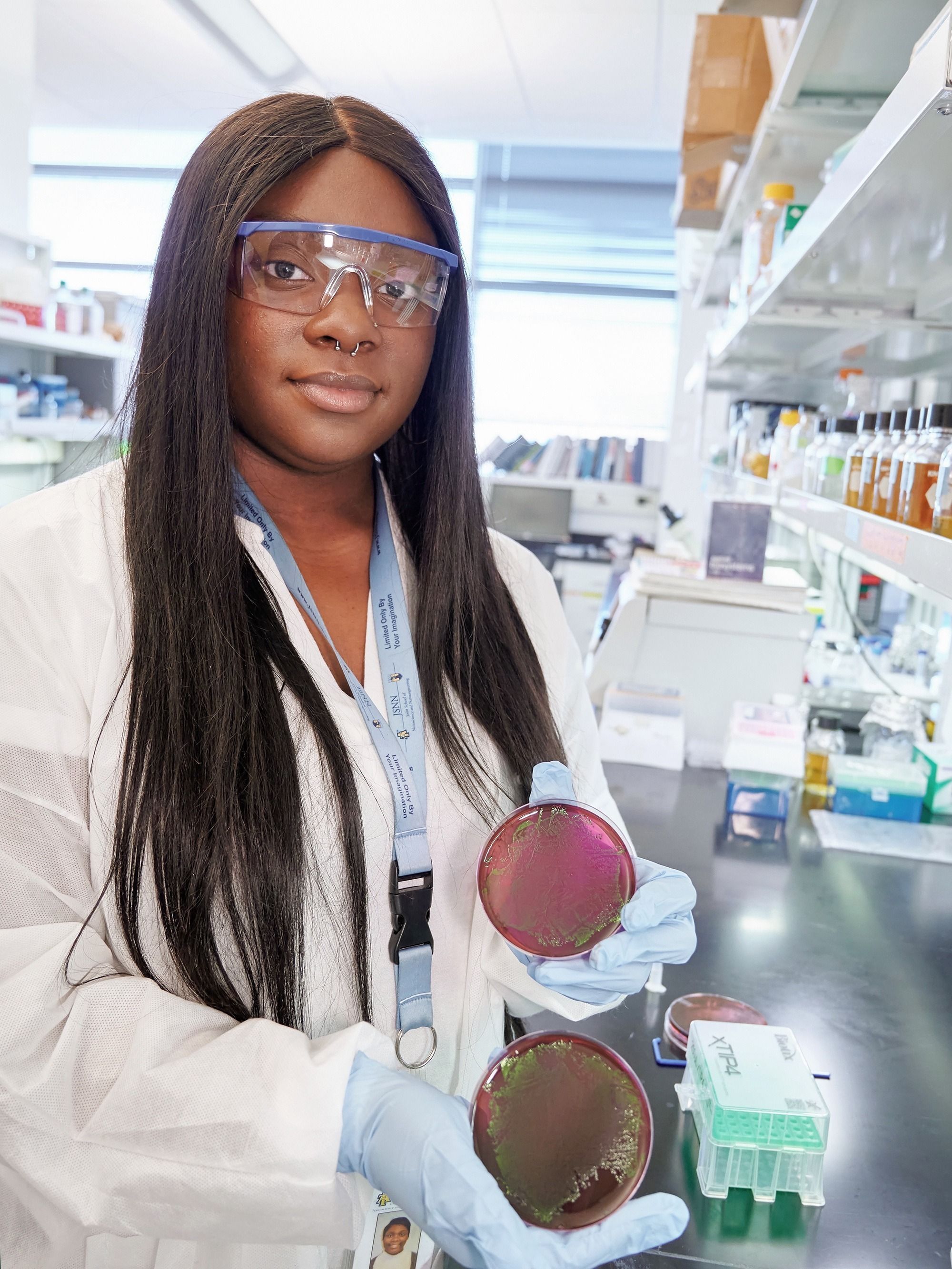
DEFINE THE DIRECTION
Senior kinesiology major Lauren Dorn began her first foray into research as a technician for a High Point University neuroscience professor, studying neuroglial cells and binge drinking.
In 2017 she was selected to join UNCG’s first MARC cohort and began conducting research with Safrit-Ennis Distinguished Professor of Kinesiology Laurie Wideman. They are studying psychosocial factors in children’s lives that impact health and psychological wellness over time.
“The outcome of my first project at UNCG suggested that neighborhood characteristics – park or green space access, crime levels, and public transportation – as well as parenting behaviors impact insulin levels, BMI, and ultimately cardiometabolic risk,” says Dorn. “We looked at c-reactive protein, which is indicative of inflammation and stress in the body. We found a relationship there, so that was really interesting.”
Dorn presented the work at ABRCMS.
“I wanted to research and study medicine, and the MARC program has made it more of a possible reality for me,” she says. “It has allowed me to put myself out there in ways I wouldn’t have been able to.”
For her external summer research experience, Dorn worked at the Mayo Clinic, looking at the effect of Vitamin D on myocarditis, an inflammatory condition that can progress to heart disease.
“I actually have a personal connection with that,” she explains. “Some of my family members have had Vitamin D deficiencies that negatively impacted their health.”
Although Dorn has already completed her second year as a MARC fellow, she is continuing her research with Dr. Wideman, now analyzing Vitamin D as a hormone working in tandem with estrogen in the body.
Their latest work examines a larger cohort of adolescents and more variables – such as seasonal vitamin D level variations and subject demographics. Dorn will also study neighborhood environments, especially factors influencing physical activity and birth control intake. She will present her results at UNCG’s 2020 Thomas Undergraduate Research Expo.
“The goal is to get a manuscript out by the time she leaves campus,” says Wideman.
Dorn, who next plans to pursue a graduate program, knows she will be an asset to the research community, particularly after completing MARC.
“There’s so much information out there that is untouched or understudied. Diversity ensures we have a variety of perspectives and motivations to continue. I like that I’m able to use my own personal experiences in the research and affect my community,” she says. “And we may have the next discovery that helps somebody drastically improve their health.”
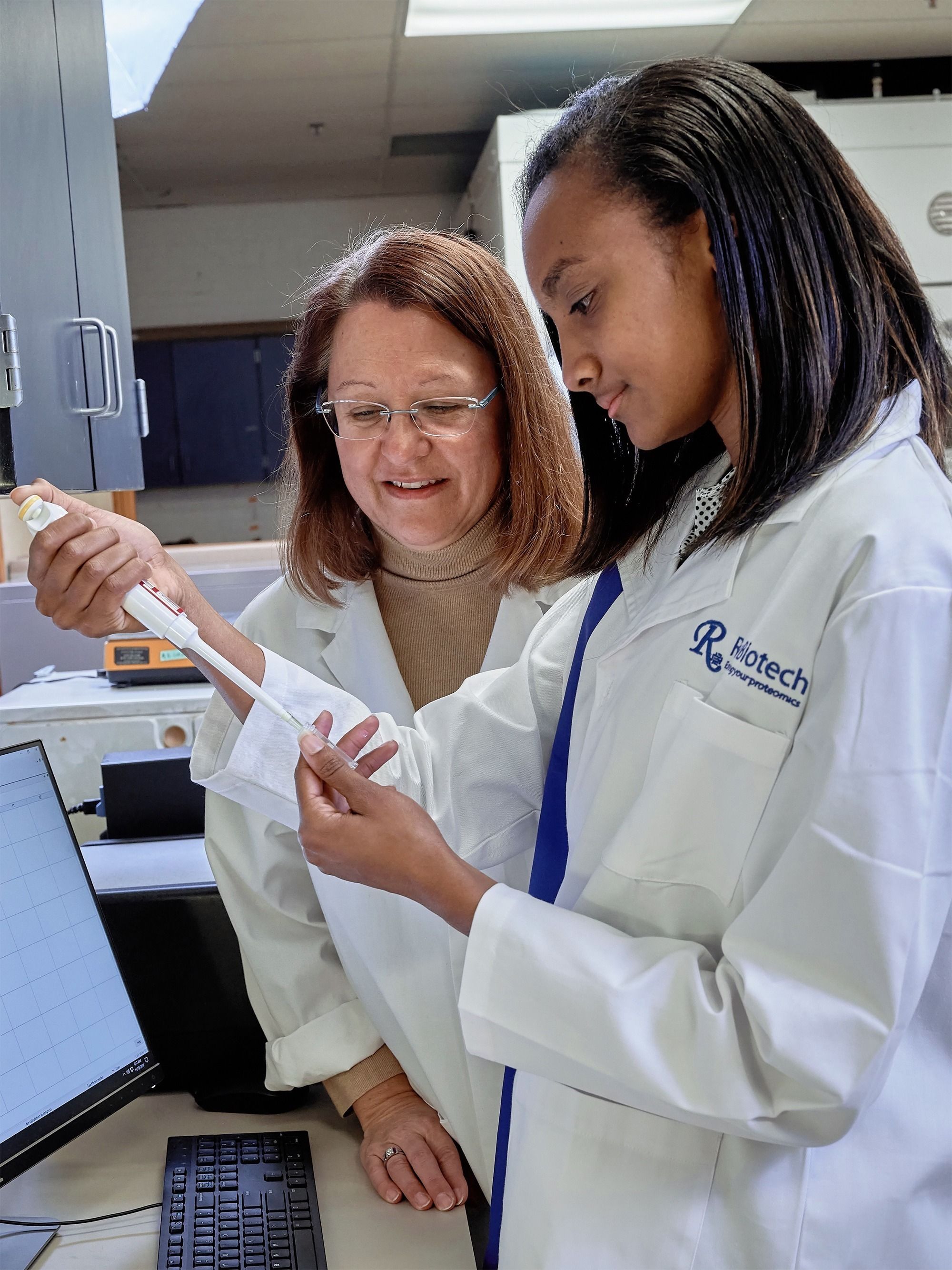
LAUNCH PAD “MARC has given me the opportunity to define what I want to do and propelled me in the direction I wanted to go,” says Dorn, pictured above, in the lab with Wideman.
Their work is part of RIGHT Track, a longitudinal study with more than $10 million in NIH funding that has tracked emotion regulation and health in 450 families over two decades.
MOVING FORWARD
Former student-athlete Alexis Rice is in the first year of her master’s program in applied sports psychology at UNCG. As an undergraduate, she was in the first cohort of UNCG’s MARC program.
Her mentor is Assistant Professor of Kinesiology Erin Reifsteck, whose research focuses on promoting physical activity and health through sport and life transitions. The Moving On! program, which aids college athletes in planning for a healthy lifestyle after college, was developed by Reifsteck with funding from the NCAA.
“I like being able to actually apply what you find,” says Rice. “A lot of my family have been athletes or played a sport. So, when I talk to them, I can explain it through the lens of their experience, and they understand.”
Rice’s first research project found a significant difference in exercise identity between ethnic minority college students and white, non-Hispanic students, particularly among women. Reifsteck says Rice’s findings could inform tailored physical activity interventions for college students.
“Her understanding of how research works improved a lot during that first year,” says Reifsteck, recalling how they worked on Rice’s writing and her process – including a literature review and developing and analyzing questions.
Rice pursued her external research project at the Physical Activity Research and Community Implementation Laboratory at Virginia Tech, examining physical activity among community-based health educators and the degree to which they met recommendations.
“It was different, but enlightening,” she says, recalling the adjustment period. “I took what Dr. Reifsteck taught me and applied it in a different way. She required me to be at a certain level, and she pushed me a little bit, so when I got to a different institution, I could push myself.”
Upon her return to UNCG, Rice participated in a number of trainings and workshops for professional development, graduate school preparation, and even how to battle feelings of impostor syndrome.
“It was a good balance,” she says. “We had courses with Dr. Graves and other mentors where we really had an opportunity to learn how to analyze at a higher level.”
At the beginning of her graduate career, Rice is already an accomplished young researcher and taking part in the greater conversations in her field. This spring, UNCG will host the Diversity in Sport Conference, supported by the Association for Applied Sport Psychology, and Rice is part of the planning committee.
Her mentor notes that kinesiology is one of UNCG’s biggest majors and increasingly diverse, but at the student level. Diversifying faculty is the next step, and Reifsteck sees MARC as an important tool in the process.
“One way we can improve diversity and representation in our field and in our communities is through the graduate student pipeline. These programs give us opportunities to work with students and prepare them to be professionals and academics. I think that’s really critical for our field and other disciplines this program targets.”

SPARTAN SCHOLAR Rice first worked with Reifsteck in applied sports psychology as a MARC student researcher. Now, she works with her as a graduate student at UNCG.